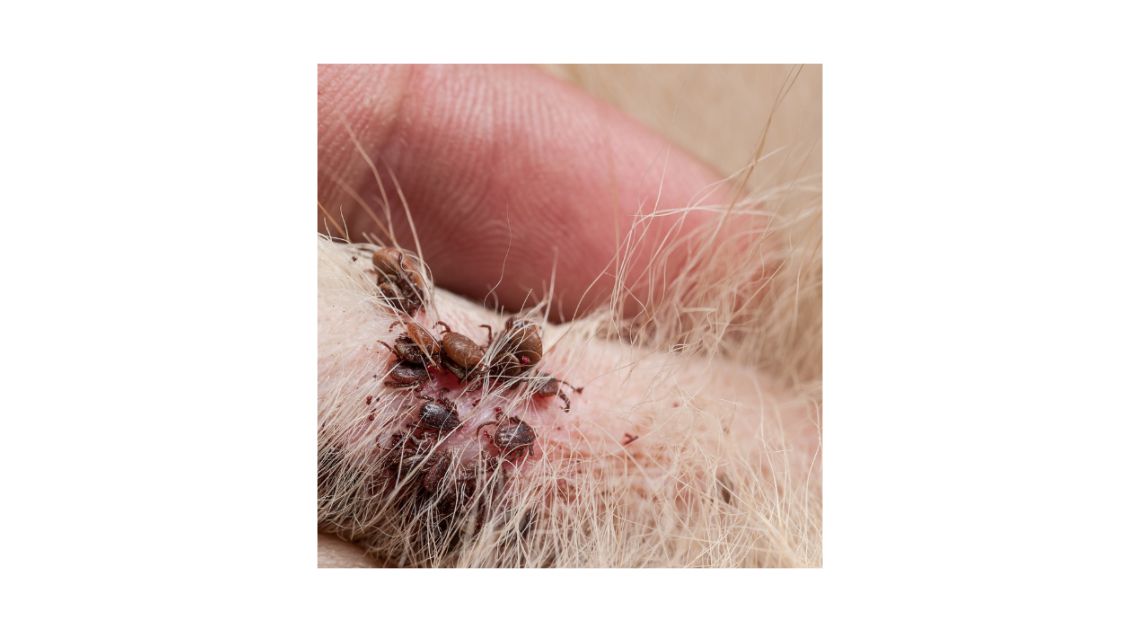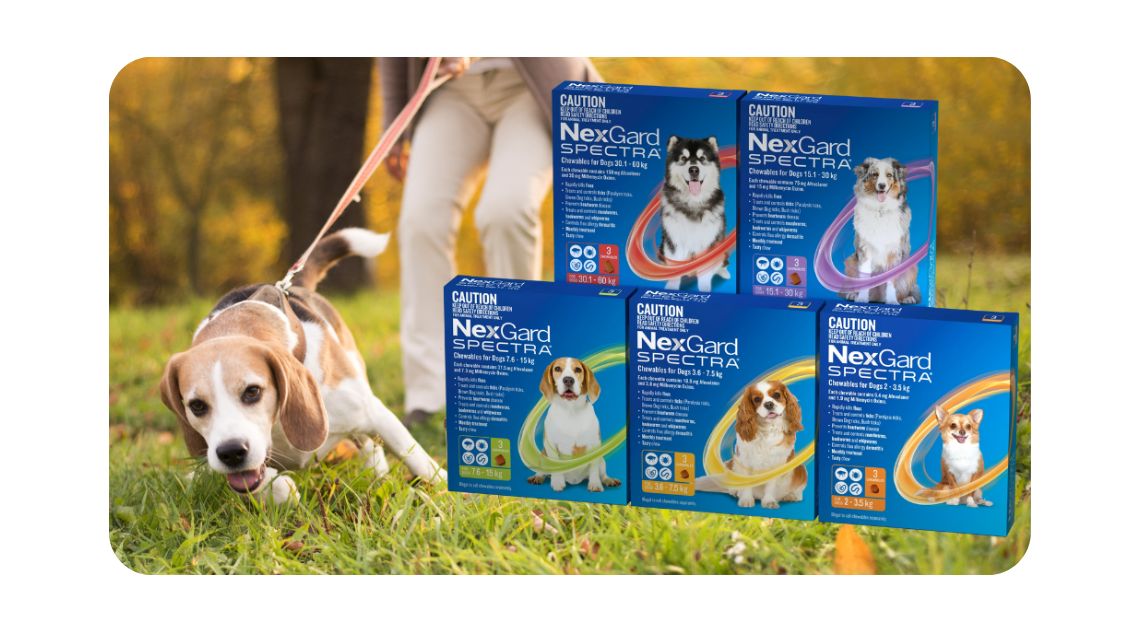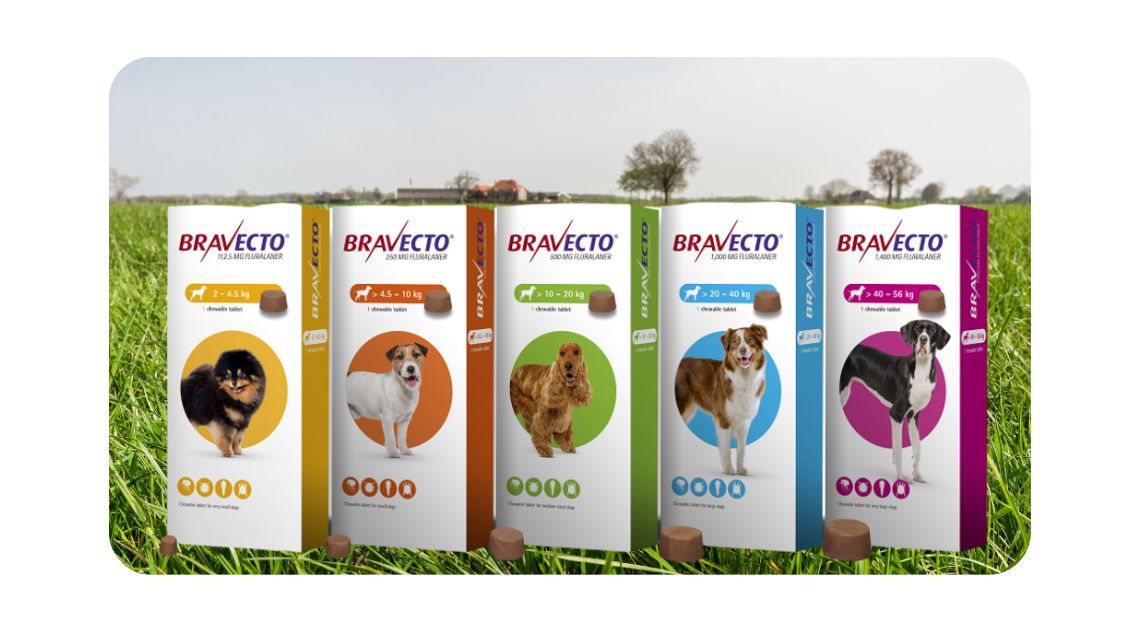Summertime means warmer weather and more time outdoors—but it also means an increased risk of encountering ticks.
These small, eight-legged creatures are more than just a nuisance; they can also transmit dangerous diseases to both humans and animals.
In this blog post, we'll discuss how to deal with dog ticks, including how to prevent them and what to do if your dog does end up getting one.

Ticks are most often found in dense wooded or bushy areas, which is why it's important to avoid these areas when taking your dog for a walk, if possible.
If you can't avoid them entirely, be sure to stay on the path and keep your dog within arms' reach at all times.
Inspect your dog thoroughly after each walk, paying close attention to the head, neck, and ears—ticks tend to attach themselves in these areas.
If you do find a tick on your dog, don't panic. There are a few different tick removal methods you can try. The most important thing is to remove the tick as quickly as possible to reduce the risk of disease transmission.
You can use tweezers to grab the tick by the head and pull it straight up, or you can purchase a tick removal tool from your local pet store. Once the tick is removed, dispose of it properly and wash your hands thoroughly.

Dog ticks are blood-sucking parasites that attach themselves to the skin of their hosts to feed. There are a number of different species of tick that can affect dogs, but the most common is the Ixodes ricinus.
Ticks live in a variety of habitats, depending on their species, but they are most commonly found in rural areas where there is plenty of vegetation for them to hide in. They breed by laying eggs on the ground, and the eggs hatch into larvae, which then attach themselves to passing animals in order to feed.
The larva stage lasts for around two weeks, after which the tick drops off its host and moults into the nymph stage. The nymph stage also lasts for around two weeks, after which the tick becomes an adult and begins to reproduce.
Adult ticks can live for up to two years!
Dogs can get ticks in a variety of ways. The most common way is through contact with an infected animal, such as a deer. Ticks will crawl up onto the dog, looking for a place to attach and feed.
Dogs that spend a lot of time outdoors in tick-infested areas are more likely to get ticks.
Symptoms of a tick infestation include frequent scratching, licking or biting of the skin, hair loss, scabs, redness and swelling. If you see any of these symptoms, take your dog to the veterinarian for a check-up. The veterinarian will check your dog for ticks and remove any that are found.

These small, oval-shaped arachnids change colour and size as they feed; the common UK dog tick starts off tiny, yet once it has attached to a host's skin (usually your furry friend), its body gets larger, turning greyish in appearance.
You may notice them before you actually see them because of how hidden these pests can be!
Ticks can also cause irritation to the skin around them as they feed. This is usually in the form of redness, swelling and itching.
There is a range of tick treatments available for dogs, including spot-on treatments, shampoos, collars and tablets.
But what tick treatment should you choose? It depends on a few factors, such as your dog's age, health and lifestyle.
First, let's take a look at some of the key treatments and what to look for.
Tick-prevention medications come in three main categories: oral chews, topical treatments you apply to the skin (like collars embedded with medication), and injectable drugs.
Most topical tick prevention products use insecticides that repel ticks, so they jump off your dog's body before biting them. Oral medications, such asNexgard Spectra Chewable Tablets, work by killing the tick after it bites your dog.
Both types of medication are effective, but some owners prefer topical treatments because they're less likely to be ingested by children or other pets in the household.
Our advice is to stick to newer classes of medications since ticks may have become resistant to older products.
How safe are tick treatments? Well, that depends on the product you choose.
Topical tick treatments are usually safe, but some people worry about the possibility of their dog licking the treatment and ingesting it.
Oral tick treatments are incredibly safe, but as with any medication, there is always a small risk of side effects.
The best way to ensure the safety of your dog is to choose a tick treatment that has been specifically designed for dogs.
Never use a tick treatment meant for humans, as it could be toxic to your dog.
Most tick treatments need to be applied every month, although some can last for up to 3 months.
Some oral treatments need to be given daily, while others can last for up to 30 days.
The frequency of treatment will depend on the product you choose, so be sure to read the label carefully.

Active ingredient: afoxolaner
NexGard Chewable Tabletsare a monthly oral treatment that kills both ticks and fleas. They're easy to give, and most dogs love the flavoured chewable tablets.
NexGard is safe for puppies over 8 weeks old, and it starts working within 24 hours of administration.
Each dose of Nexgard provides protection for around one month.
Bravecto Chewable Tablets

Active Ingredient: fluralaner
If your dog is constantly attacked by ticks and fleas, then you need to get them medication likeBravecto.
These chewable tablets start killing embedded pests in as little as 12 hours after taking administration. Plus, they're available for dogs from around four pounds all the way up to
123 lbs. They can last up to 12 weeks too!
You canorder Bravecto online from Vet Pharmacy Online with a prescription from your vet.
There are many great solutions for treating and preventing your dog from getting ticks.
If you're looking for a monthly oral treatment, we recommend Nexgard Chewables. If you need something that lasts longer, Bravecto Chewable Tablets are a great option.
Whichever tick treatment you choose, be sure to follow the instructions carefully and reapply as required.
Dogs can get ticks from walking in long grass, bushes or woods. Ticks will jump onto a passing dog and then bite into the skin to feed on the blood.
The most obvious sign that your dog has a tick is if you find one attached to its skin. Ticks can be of various sizes, from very small to quite large. Symptoms may include small bumps, irritation and excessive scratching.
There are various ways to remove ticks from your dog's skin. You can use a tick remover tool, tweezers, or even your fingers. Be careful not to squeeze the tick's body since this can cause the contents to be released back into your dog's bloodstream.
There are various tick prevention products available, such as spot-on treatments, collars and oral treatments. These products will help to keep your dog tick-free. You should also try to avoid taking your dog into areas, such as woods and long grass, where there are likely to be ticks present.